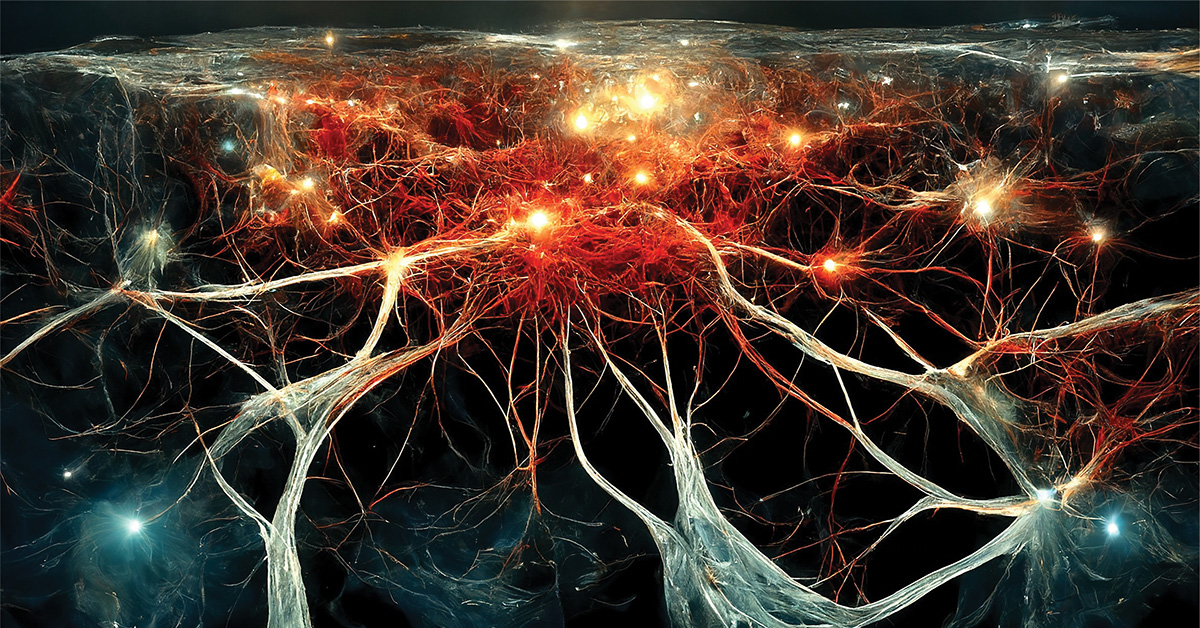
What is generative AI?
Our recent post on artificial intelligence (AI) covered the history and some of the key players in AI development. In this post, we’ll take it further and explore generative AI (GenAI) and how it relates to AI.
Generative AI technologies create text, images, videos, and other types of content. This content is intended to mimic human creativity and real-world data. GenAI differs from traditional AI in that it uses machine learning models to learn relationships, patterns, and other characteristics within a dataset. What is learned is used by GenAI to generate new content. Ideally, the output of GenAI meets the requirements of the prompt and is an original piece of content.
Gen AI is one of several subsets of artificial intelligence:
- Machine Learning (ML) enables machines to learn from data to improve their performance over time. It includes subfields such as neural networks, deep learning, and reinforcement learning.
- Deep Learning is a form of ML that uses neural networks to analyze complex data and identify patterns in ways that are beyond human capabilities.
- Natural Language Processing (NLP) capabilities allow machines to understand and generate human language. This is only language, not spoken words.
- Speech Recognition technologies enable computers to recognize and translate spoken language into text. This is a separate set of technologies from NLP.
- Generative AI creates content that is based on what it has previously learned. Large language models (LLMs) like ChatGPT and Gemini AI are GenAI technologies.
This list is hardly exclusive. There are several more subgroups of AI, including robotics, machine vision, and expert systems. Many of these overlap and industry vendors differ on the names and hierarchies. We’ll keep it simple and use a broad definition of GenAI.
The exact origins of GenAI are a bit murky, so we’re going to start in the 1950s when researchers were developing algorithms that could create new data. This research produced the Markov Chain, a statistical model that can generate new data sequences based on input. Another early example is ELIZA, a simple chatbot developed at MIT in 1966. She was programmed with communication scripts and instructed to match human input patterns to patterns found in her scripts. This pattern recognition with no context often produced comical interactions:
Human: My mother hates me.
ELIZA: Who else in your family hates you?
Human: What do you mean?
ELIZA: What answer would please you the most?
Poor ELIZA wasn’t much of a conversationalist, but she did keep the growing AI community excited and pushing for more.
GenAI took a big step forward in 2014 when generative adversarial networks (GANs) came into play. These GANs are neural networks that compete against each other in response to input. MIT Technology Review described it like this:
Both networks are trained on the same data set. The first one, known as the generator, is charged with producing artificial outputs, such as photos or handwriting, that are as realistic as possible. The second, known as the discriminator, compares these with genuine images from the original data set and tries to determine which are real and which are fake. On the basis of those results, the generator adjusts its parameters for creating new images. And so it goes, until the discriminator can no longer tell what’s genuine and what’s bogus.
Google’s Machine Learning course illustrates GANs like this:
By working against each other like this, these networks support continuous learning and improvement in GenAI.
New technologies and concepts brought massive opportunities for GenAI. In 2017, Google introduced the idea of the Transformer model, which facilitated the development of other tools and models. OpenAI used this concept to develop a series of Generative Pre-trained Transformers (GPT) and launched ChatGPT in November 2022.
There’s more to GenAI than chatting with an LLM like ChatGPT or Gemini AI. It’s used to screen healthcare patients, create custom K12 learning environments, streamline reservations and travel itineraries, and so much more. Generative AI is all around us. You don’t have to use a prompt to get pulled into artificially generated conversations and scenarios. Just as you can ask GenAI to give you dessert ideas and some recipes, threat actors can ask GenAI to pull you into a scam by developing malicious attack code or writing 'original' phishing attacks.
The promise of GenAI does come with some risks. We'll talk about that next week.
Did you know...
Barracuda has published a new e-book titled Securing tomorrow: A CISO’s guide to the role of AI in cybersecurity. This e-book explores security risks and exposes the vulnerabilities that cybercriminals exploit with the aid of AI to scale up their attacks and improve their success rates. Get your free copy of the e-book right now and see all the latest threats, data, analysis, and solutions for yourself.

The Ransomware Insights Report 2025
Risultati chiave sull'esperienza e l'impatto del ransomware sulle organizzazioni a livello mondiale
Iscriviti al blog di Barracuda.
Iscriviti per ricevere i Threat Spotlight, commenti del settore e altro ancora.

Sicurezza della vulnerabilità gestita: correzione più rapida, meno rischi, conformità più semplice
Scopri quanto può essere facile individuare le vulnerabilità che i criminali informatici vogliono sfruttare






